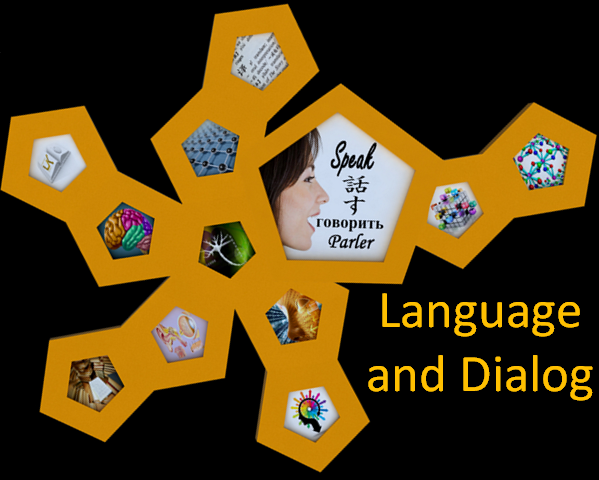| 6 |
Introduction to Language and Dialog |
6.23 |
Breaking Down Language Structure and Function |
| 6.1 |
Evolution of Language |
6.24 |
Form and Substance in Communication |
| 6.2 |
Language Expressiveness |
6.25 |
What Was That Word? |
| 6.3 |
Mainspring of Language Learning |
6.26 |
Conceptual Paradigms |
| 6.4 |
What is a Set: Multiple Meanings in Digital Lingo |
6.27 |
Continuity of Learning |
| 6.5 |
Asymmetrical Balance and Chaos |
6.28 |
Mosaic of Concepts |
| 6.6 |
Body Language in Understanding |
6.29 |
The Multiple Meanings of Polysemy |
| 6.7 |
Understanding Subtext |
6.30 |
Exceptional Logic |
| 6.8 |
Shades of Meaning |
6.31 |
Traditional Grammar from the Top Down |
| 6.9 |
Exformation vs. Subtext |
6.32 |
Linguistic Building Blocks |
| 6.10 |
The Pedantic Querulous Shrinking Violet |
6.33 |
Up from Words to Sentences |
| 6.11 |
Two Rights and a Village: Social Communication |
6.34 |
A Slice of Language |
| 6.12 |
Think Before You Speak? |
6.35 |
Pairs of Language Strata |
| 6.13 |
Talking About Computational Linguistics |
6.36 |
Three-Dimensional Model of Language |
| 6.14 |
Are You My Grammar? |
6.37 |
Stratum Morphology |
| 6.15 |
Making a Pattern of Comprenshion |
6.38 |
Word Structure Analysis |
| 6.16 |
Translation: Inverted Communication |
6.39 |
Patterns at the Boundaries |
| 6.17 |
The Myth of Inexpressibility |
6.40 |
Analyzing Syntax |
| 6.18 |
From Concept to Communication |
6.41 |
Analyzing Semantics |
| 6.19 |
Learning by Repetition |
6.42 |
Discourse Pragmatics |
| 6.20 |
Irrational Language Rules |
6.43 |
Deixis and Context |
| 6.21 |
Learning by Doing or Active Osmosis |
6.44 |
Context Collapse |
| 6.22 |
Language Inherited |
Bib |
References in the Bibliography |

